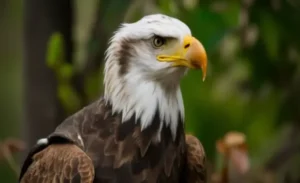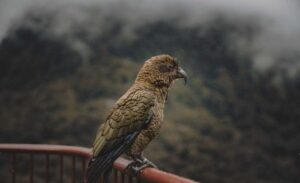Birds are among the most fascinating creatures on Earth, embodying beauty, grace, and mystery. Their ability to fly, their vivid plumage, and the vast array of species all contribute to their mystique. Among the many species of birds, Hancock birds hold a special place due to their unique characteristics and their ability to captivate bird enthusiasts and scientists alike. This article dives deep into the world of Hancock birds, exploring their diverse nature, biological adaptations, evolutionary significance, and their enigmatic behavior that has long puzzled both casual observers and ornithologists.
The Fascinating World of Hancock Birds
Hancock birds are not just a single species but represent a collection of bird species that share common traits in terms of habitat, behavior, and physiology. These birds are known for their exceptional adaptability to various environments, ranging from dense forests to arid plains. They also exhibit an impressive range of plumage, with some species displaying vibrant colors and others adopting more subdued tones for camouflage.
Birdwatchers who specialize in observing Hancock birds often marvel at their versatility. Some species are migratory, traversing vast distances across continents, while others remain resident in their native habitats year-round. Despite these differences, they are united by their ability to survive and thrive in a wide range of ecological conditions.

Characteristics that Set Hancock Birds Apart
The defining features of Hancock birds are multifaceted. Below are some of the key characteristics that distinguish them from other avian species:
- Adaptability to Multiple Habitats: Hancock birds can be found in a wide range of environments, including wetlands, tropical rainforests, grasslands, and even urban areas. Their ability to adjust to varying conditions is one of the reasons for their widespread distribution.
- Complex Vocalizations: Hancock birds are known for their complex calls and songs, which serve not only as communication tools but also as methods for attracting mates and defending territories.
- Unique Plumage and Coloration: One of the most striking features of Hancock birds is their vivid plumage. Some species exhibit iridescent feathers that shimmer in sunlight, while others possess intricate patterns that help them blend seamlessly into their environment.
- Sophisticated Nesting Behavior: Hancock birds are known for their elaborate nest-building skills. Their nests can vary from simple scrapes in the ground to intricate structures made of twigs, leaves, and mud.
Adaptations for Survival: A Closer Look
The survival of Hancock birds in such varied ecosystems is not a mere coincidence; it is the result of numerous biological adaptations that have evolved over millennia. These adaptations allow them to exploit available resources, avoid predators, and reproduce successfully. Understanding these mechanisms provides insights into the incredible resilience of these birds.
Flight Adaptations
Perhaps the most fascinating aspect of birds, including Hancock birds, is their ability to fly. Flight is a key evolutionary adaptation that has allowed birds to explore and inhabit virtually every corner of the planet. Hancock birds possess several unique adaptations that enhance their flying ability:
- Streamlined Bodies: The bodies of Hancock birds are streamlined, reducing air resistance and allowing for efficient flight. Their wings are specially adapted to different types of flight, depending on the species. For example, some birds have broad wings for soaring, while others have shorter, more powerful wings for rapid, agile flight.
- Lightweight Skeleton: Like all birds, Hancock birds have hollow bones that are strong yet lightweight. This adaptation minimizes the energy required for flight while maintaining structural integrity.
- Strong Pectoral Muscles: The muscles that power flight in birds are highly developed in Hancock birds. Their pectoral muscles, which control the wings, are particularly robust, allowing for sustained flight over long distances.
Beak and Feet Variations
Hancock birds have also evolved a wide range of beak shapes and sizes, depending on their dietary habits. Their feet are similarly adapted to their environment, enabling them to grasp branches, walk on various surfaces, or catch prey.
- Curved Beaks: Species that feed on insects or small vertebrates typically have sharp, curved beaks for catching and tearing apart prey.
- Flat Beaks: Birds that primarily feed on fruits or seeds often have flat beaks, which allow them to crack open nuts or seeds with ease.
- Webbed Feet: Hancock birds that live near water may have webbed feet, which facilitate swimming and foraging in aquatic environments.
Migration and Navigation
Another remarkable adaptation of Hancock birds is their ability to migrate over long distances. Migration requires not only immense physical stamina but also an intricate navigational system. Hancock birds use a combination of environmental cues, such as the position of the sun and stars, the Earth’s magnetic field, and landmarks, to guide them on their journeys.

The Social Behavior of Hancock Birds
Birds are often social creatures, and Hancock birds are no exception. Their social behavior is complex, involving intricate hierarchies, cooperative breeding systems, and communal roosting. These behaviors not only increase their chances of survival but also play an essential role in maintaining stable populations within ecosystems.
Cooperative Breeding
Furthermore, one of the most interesting aspects of Hancock birds’ social lives is their tendency to engage in cooperative breeding. In many species, non-breeding individuals will help raise the offspring of breeding pairs. This altruistic behavior benefits the entire group, as it increases the likelihood that the young will survive to adulthood.
Communal Roosting
Hancock birds are also known to engage in communal roosting, where large numbers of birds gather to sleep together. This behavior is believed to serve multiple purposes, including increasing warmth during cold nights and providing protection from predators. By roosting in groups, Hancock birds can take advantage of safety in numbers, reducing the chances that any one individual will be targeted by a predator.
Evolutionary Origins of Hancock Birds
To truly appreciate the unique nature of Hancock birds, it is essential to explore their evolutionary origins. Like all birds, Hancock birds are descended from theropod dinosaurs. This connection between modern birds and their prehistoric ancestors is evident in many of the anatomical features shared by both groups, including hollow bones and a similar respiratory system.
Fossil Evidence
Fossil evidence suggests that birds first evolved during the late Jurassic period, around 150 million years ago. The earliest known bird, Archaeopteryx, possessed many of the same characteristics seen in modern Hancock birds, including feathers and a lightweight skeleton. Over time, natural selection favored birds that were capable of sustained flight, leading to the development of more specialized features such as an enlarged sternum (breastbone) and elongated wings.
Adaptive Radiation
The diversification of birds, including Hancock birds, is an example of adaptive radiation. This process occurs when a single ancestral species gives rise to multiple descendant species, each adapted to a different ecological niche. As Hancock birds spread across different environments, they evolved unique adaptations to exploit the resources available in each habitat. This has resulted in the vast array of species that we see today, each perfectly suited to its particular environment.
The Mystery of Bird Intelligence
One of the most intriguing aspects of Hancock birds is their intelligence. Birds have traditionally been underestimated in terms of cognitive abilities, but recent research has shown that many species, including Hancock birds, exhibit remarkable problem-solving skills, memory, and even tool use.
Problem-Solving Abilities
Hancock birds are known for their problem-solving abilities, particularly when it comes to foraging for food. Some species have been observed using tools, such as sticks or rocks, to extract insects from tree bark or crack open nuts. These behaviors demonstrate a level of cognitive sophistication that was once thought to be exclusive to primates.
Memory and Navigation
The ability of Hancock birds to navigate over long distances during migration also points to their advanced memory and spatial awareness. Birds must remember specific landmarks and environmental cues to find their way, often traveling thousands of miles to return to the same nesting sites year after year.
Threats to Hancock Birds
Despite their adaptability and intelligence, Hancock birds face numerous threats in the modern world. Habitat destruction, climate change, and human activities all pose significant challenges to the survival of many bird species. Conservation efforts are crucial to ensuring that these enigmatic creatures continue to thrive.
Habitat Destruction
Furthermore, as human populations expand, natural habitats are increasingly being destroyed to make way for agriculture, urban development, and infrastructure projects. Hancock birds that rely on specific habitats for breeding or feeding are particularly vulnerable to these changes. Wetlands, forests, and grasslands are all under threat, leading to declines in bird populations.
Climate Change
Climate change is another major threat to Hancock birds. Rising temperatures, altered precipitation patterns, and more frequent extreme weather events can disrupt the delicate balance of ecosystems, making it harder for birds to find food, breed successfully, or complete their migratory journeys.
- Habitat Shifts: As temperatures rise, the habitats that Hancock birds rely on are shifting. Species that are adapted to cooler climates may find it increasingly difficult to survive as their preferred environments disappear.
- Food Availability: Changes in weather patterns can also affect the availability of food. For example, migratory birds that rely on insects or nectar may arrive at their destinations to find that the timing of plant blooming or insect hatching has shifted due to climate change.
- Increased Predation: In some cases, climate change may lead to increased predation of Hancock birds. For example, as sea levels rise, birds that nest on coastal islands may find themselves more vulnerable to predators such as rats and cats.

Conservation Efforts: Protecting Hancock Birds for Future Generations
Given the numerous threats facing Hancock birds, conservation efforts are more important than ever. These efforts can take many forms, including habitat restoration, legal protection, and public education campaigns.
Habitat Restoration
One of the most effective ways to protect Hancock birds is to restore their natural habitats. This can involve reforesting areas that have been cleared for agriculture, preserving wetlands that are vital for breeding and feeding, and creating wildlife corridors that allow birds to move safely between habitats.
Legal Protections
In many parts of the world, Hancock birds are protected by laws that prevent hunting, capture, or trade. These legal protections are essential for ensuring that bird populations remain stable and continue to thrive. However, enforcement of these laws can be challenging, particularly in regions where resources are limited or where illegal wildlife trade is rampant.
Public Awareness and Education
Public awareness campaigns play a crucial role in conserving Hancock birds. Educating people about the importance of birds to ecosystems and encouraging responsible behavior—such as reducing pesticide use, protecting nesting areas, and supporting bird-friendly agriculture—can make a significant difference in protecting these species for future generations.
Conclusion: The Enduring Enigma of Hancock Birds
Hancock birds represent a fascinating and diverse group of species that continue to captivate scientists and birdwatchers alike. Their incredible adaptability, striking beauty, and mysterious behaviors make them an enduring subject of fascination. However, the future of Hancock birds is far from certain, as they face numerous challenges in an increasingly human-dominated world.
Through continued research, conservation efforts, and public engagement, there is hope that Hancock birds will continue to thrive for generations to come, preserving the beauty and mystery of these remarkable creatures. Whether through understanding their evolutionary origins, unraveling the complexities of their social structures, or working to protect their habitats, there is still much to be discovered about the enigmatic world of Hancock birds.

